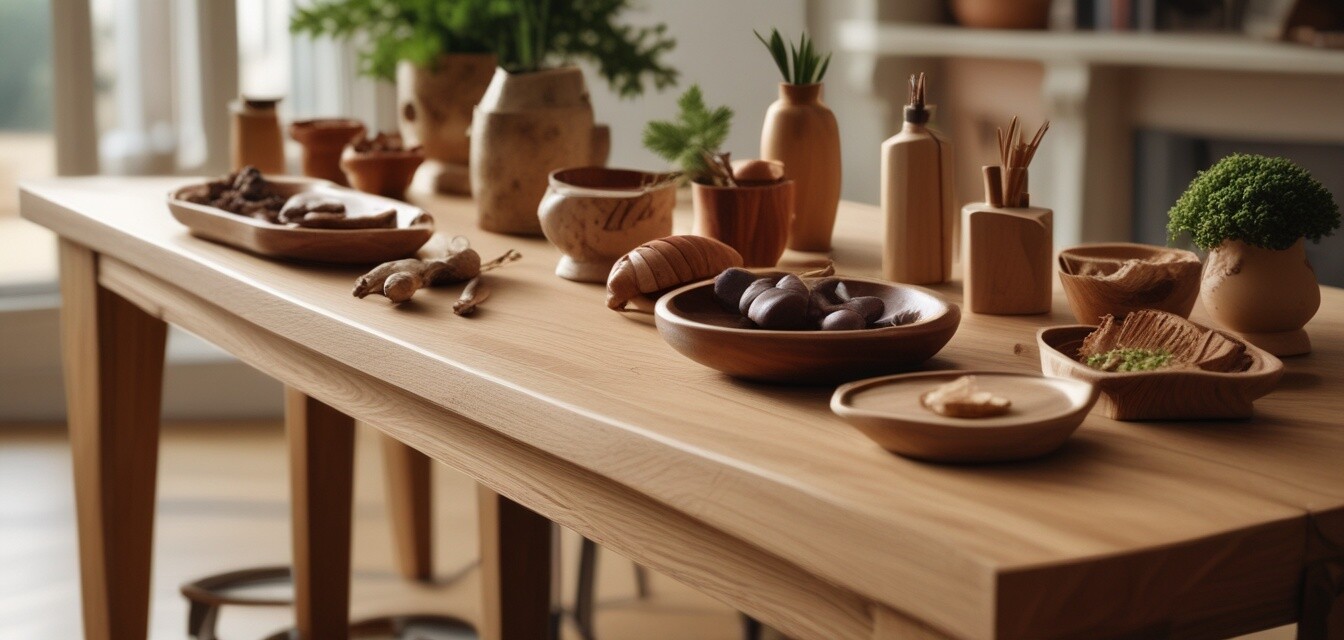
Trends in Sustainable Interior Design
Key Takeaways
- The rise of eco-friendly materials, especially sustainably sourced wood, is dominating interior design.
- Innovative design techniques help create new aesthetic value while promoting sustainability.
- More consumers are prioritizing craftsmanship and sustainability in their purchasing decisions.
- Natural wood products contribute to healthier indoor environments.
As we move towards a more eco-conscious world, the field of interior design is witnessing exciting changes centered around sustainability. This shift is largely driven by the increasing awareness of environmental issues and the desire for a harmonious connection between nature and our living spaces. One of the materials shining brightly in this movement is wood, especially when it comes from sustainable sources. Let's explore the trends that are reshaping sustainable interior design in today’s homes.
1. Sustainable Materials
The core of sustainable interior design lies in the materials used. Homeowners and designers are increasingly turning towards materials that have minimal environmental impact. Wood, particularly, is a preferred choice due to its renewability and natural elegance.
Types of Sustainable Wood
| Wood Type | Characteristics |
|---|---|
| Bamboo | Fast-growing, lightweight, and strong; a grass that can be harvested without killing the plant. |
| Reclaimed Wood | Wood that is salvaged from old buildings, providing a rustic charm and reducing waste. |
| Forest Stewardship Council (FSC) Certified Wood | Wood sourced from forests that are responsibly managed, ensuring ecological balance. |
| Hardwoods from Sustainable Forestry | Species like maple or oak that are harvested sustainably to maintain forest habitats. |
Using these types of wood not only supports sustainable practices but also promotes stylish and unique designs that evoke natural beauty.
2. Minimalism Meets Nature
Minimalist design plays a significant role in highlighting natural materials. The trend towards simplicity allows the unique grains and textures of wood to stand out without overwhelming the space. This philosophy creates an inviting atmosphere, perfect for the eco-conscious homeowner.
3. Biophilic Design
Incorporating biophilic elements into interior design becomes more popular as people seek a strong connection to nature. This approach often involves using natural materials, such as wood, and focusing on designs that bring the outdoors inside.
Examples of Biophilic Design Features
- Wood paneling that mimics the look of natural tree trunks.
- Large windows that invite natural light and views of the surrounding landscape.
- Open shelves made from reclaimed wood showcasing natural decor pieces.
- Indoor gardens paired with natural wood planters.
4. Eco-Friendly Finishing Products
Using eco-friendly finishing products is essential in sustainable interior design. Instead of traditional varnishes and paints filled with chemicals, many designers opt for natural oils and waxes that protect the wood while being safe for indoor air quality.
Benefits of Eco-Friendly Finishes
- Non-toxic components promote a healthier living environment.
- Natural finishes enhance the wood's natural beauty without artificial gloss.
- Greater sustainability due to biodegradability and reduced harmful emissions.
5. Upcycling and DIY Projects
Upcycling furniture and engaging in DIY projects are becoming more popular in sustainable interior design. This trend not only allows for personalization but also minimizes waste by giving new life to discarded items and materials.
Upcycling Ideas
- Transforming old wooden crates into stylish coffee tables.
- Repainting bookshelves made from reclaimed wood in fresh colors.
- Creating wall art from leftover wood scraps.
6. Consumer Preferences Shift
As the market changes, consumers are becoming more selective about their purchases. They are now asking questions about the source of the materials and the overall environmental impact of the products they bring into their homes.
Many now prefer to shop from companies that practice ethical sourcing and maintain transparent supply chains. For instance, wood finishing products should highlight their sustainable practices to cater to this growing audience.
Conclusion
As we embrace the future of home decor, the focus on sustainable interior design, particularly with wood, showcases a commitment to preserving our planet while creating beautiful living spaces. Customers are encouraged to seek out natural wood products that reflect their values, combining sustainability with aesthetic appeal. Exploring options such as kitchenware or home décor accents made from sustainable materials helps create a home environment that is not only stylish but also earth-friendly.
Pros
- Promotes eco-friendly living and sustainability.
- Enhances the beauty of indoor spaces through natural aesthetics.
- Supports ethical sourcing and craftsmanship.
Cons
- Eco-friendly products can be more expensive than conventional options.
- Availability of sustainable options may vary based on location.
For those interested in exploring more about eco-friendly practices, check out our section on sustainable practices. Stay tuned as we continue to explore the latest trends in the realm of natural wood and sustainable designs.